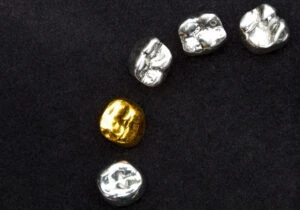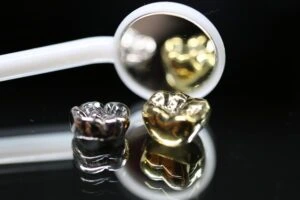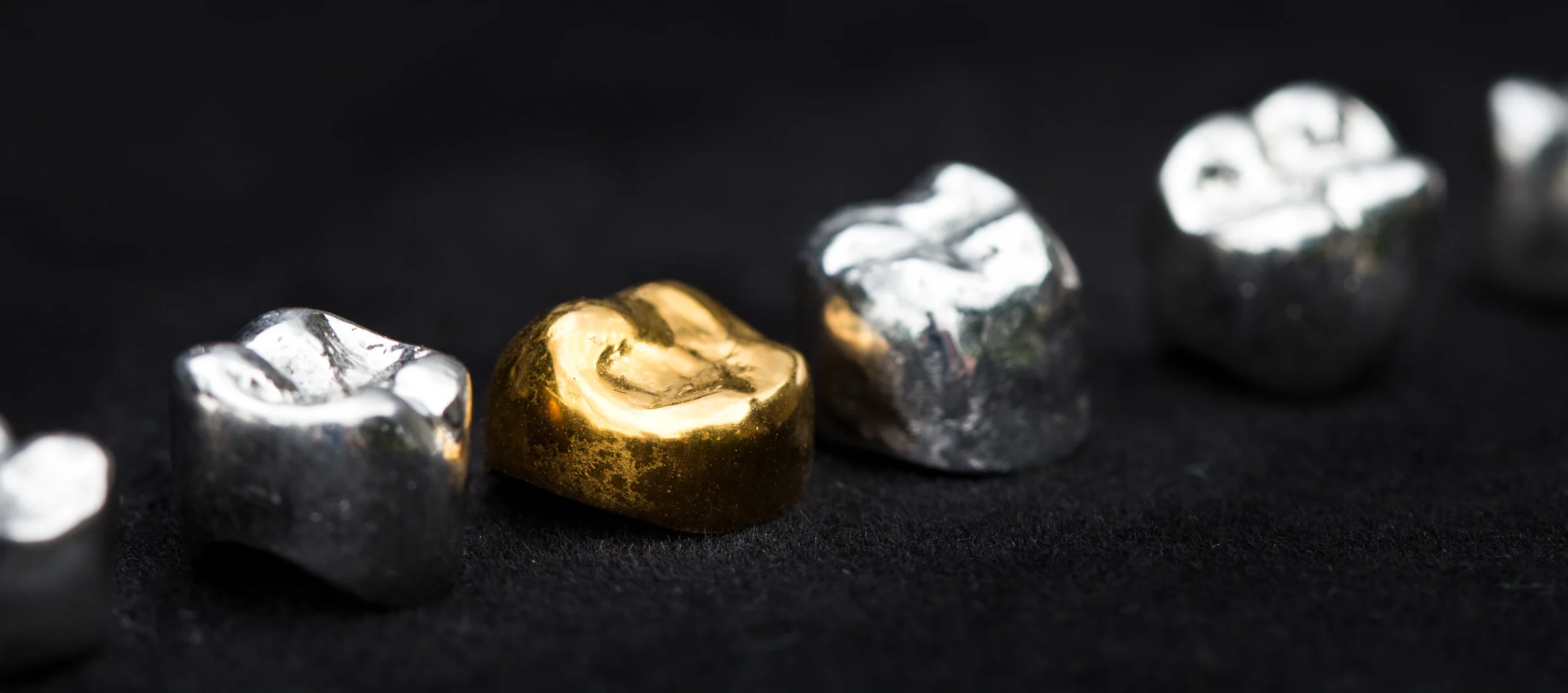Although dental gold is less common than it was in the early 20th century, it surely still exists. In fact, we still receive shipment after shipment of dental gold here at Garfield Refining! From crowns to fillings, bridges and inlays, precious metals remain prized in the dental industry.
For the first half of the 20th century, gold crowns were the gold standard in dentistry. Porcelain-fused-to-metal (PFM) crowns then became popular in the 1950s, followed by all-ceramic crowns in the 80s. With advancements in these more modern alternatives, dental gold has taken the back seat. But believe it or not, many dentists still think of gold alloys as the best option in terms of quality and longevity. In many ways, gold is the original dental material of choice – after all, it’s been used to repair teeth in different ways for thousands of years.

Why Don’t People Get Gold Teeth Anymore?
Although it may seem like nobody gets gold teeth anymore, people certainly do – for several reasons.
Zirconia, resin and composite are popular because they look more natural than metal. Enamel-colored materials will obviously blend into one’s smile much less noticeably than yellow or white gold.
A natural look is, understandably, a high priority for many patients, especially if they’re dealing with a front tooth that’s highly visible. But when it comes to the back-most teeth that we really need for chewing, function trumps aesthetics. After all, how much do we really see each other’s molars when we smile?
The Best Choice For Molars
Molars deserve the best possible treatment when it comes to repairs. They’re the among the most important teeth in your mouth, playing a crucial role in oral health and well-being. From chewing and grinding food into smaller pieces – the essential first step in digestion – to supporting jaw structure, maintaining alignment and more, molars are the MVPs of teeth.
When it comes to restoring molars, gold alloys are a practical and superior choice for fillings and crowns. Gold performs the best job in terms of biocompatibility, resistance to corrosion, durability. Gold’s longevity makes it an ideal option, especially for back teeth and molars where aesthetics are less of a concern.
Gold Tooth Bling
Aside from the functionality, some people enjoy the look of gold teeth. Using gold as tooth decor is nothing new – from ancient Etruscans to the grills of 90s/2000s hip-hip and today’s trendy tooth gems, people have been donning gold teeth for centuries. Gold has long been associated with luxury and prestige, a reputation that extends to its use in dentistry.

How Long Do Gold Tooth Fillings Last?
Gold tooth fillings last much longer – two to four times longer – than other materials like composite. According to the American Dental Association (ADA), gold fillings can endure for 20+ years. Unlike other materials, gold won’t crack, oxidize or become discolored on the surface. Gold fillings also aren’t prone to expansion or contraction with temperature changes, which helps prevent discomfort for the patient.
Here are a few more pros of gold fillings:
- Gold is very malleable and can be fitted into the tooth cavity precisely without leaving any gaps between the filling and the enamel, leaving less room for bacterial growth.
- Gold fillings don’t damage the opposing teeth.
- When placing gold fillings, the dentist doesn’t need to remove as much of the natural tooth to make space for the restoration.
- Gold fillings are biocompatible with other oral tissues like the gums.
These benefits go beyond fillings – the same advantages apply to other dental repairs as well, such as crowns and inlays.
Get the Most Value out of Your Gold Dental Scrap
Another noteworthy upside to dental gold is that it holds value beyond its life inside a patient’s mouth. Once the gold material is eventually extracted, it can be sold to a refinery for recycling. Even just one or two pieces of precious metal dental scrap can hold significant monetary value!
If you’re a dentist, dental assistant, lab tech or patient with extracted dental gold on your hands, make sure to hold onto the material and ship it to a trusted refinery when you’re ready to sell.
From cash buyers to pawn shops and even some jewelers, there are many places to sell gold dental scrap. However, not all gold buyers are created equal. A refinery like Garfield is the way to go – we offer the industry’s highest payments and best customer service. That’s why leading dentists agree that Garfield Refining is the best place to sell dental gold!
Established in 1892, Garfield helps dentists get the most for their gold, silver, platinum, and palladium dental scrap. Leading dentists agree we’re the industry benchmark for high payments and customer service. That’s why they’ve voted us North America’s “Best Dental Refiner” for 13 years straight.
Ready to sell your dental scrap? Start your free shipment today! You can even exchange your scrap for bullion!

